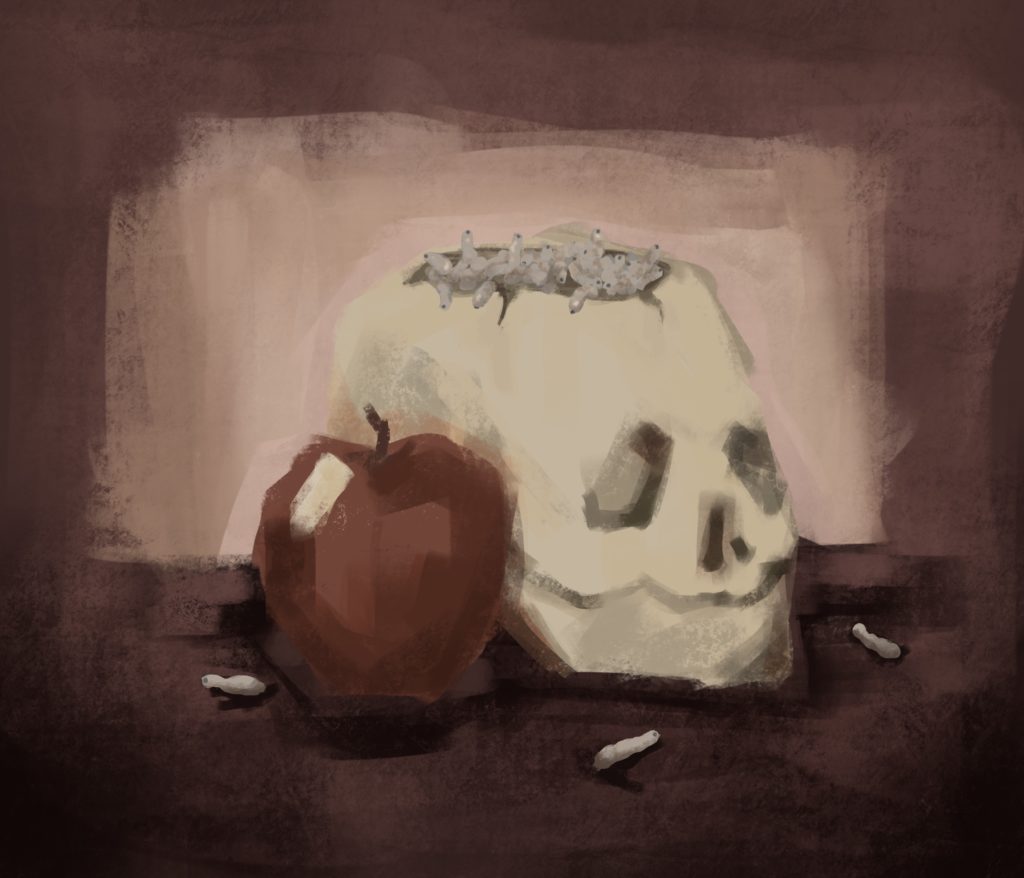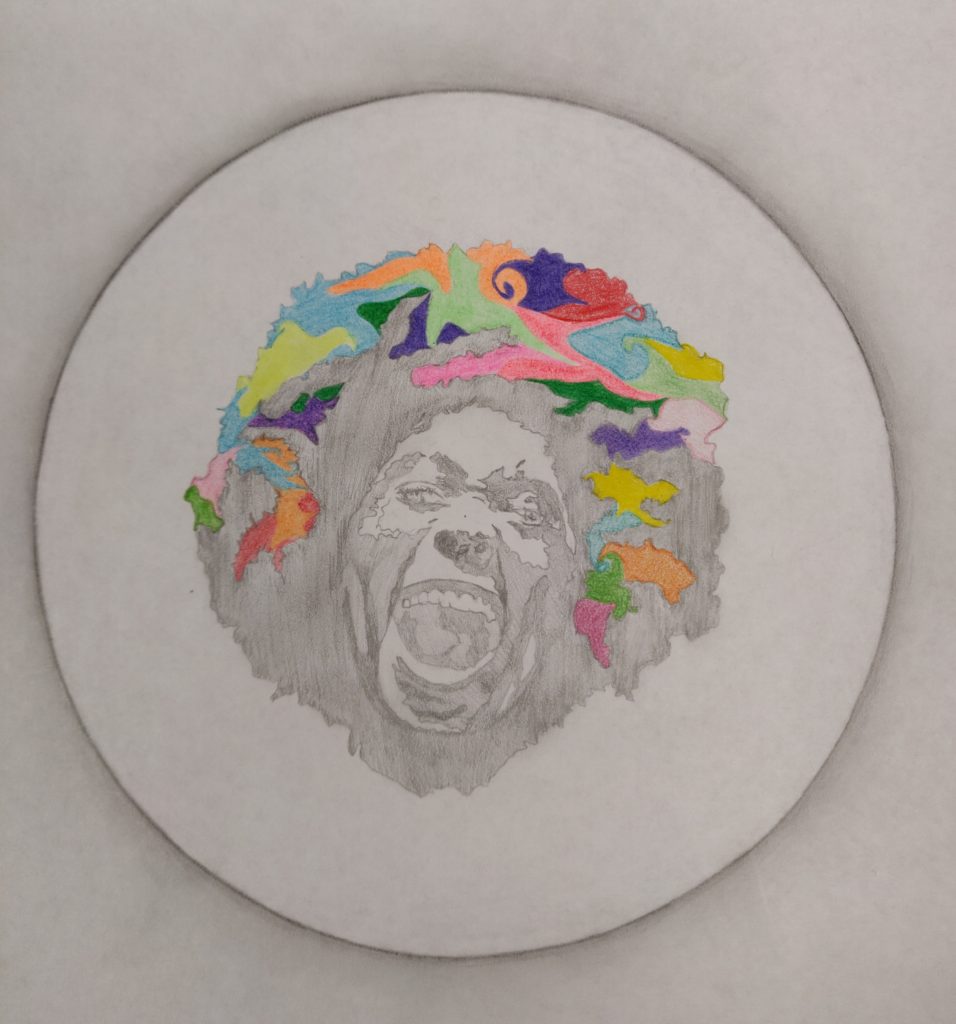The History and Popular Music of the ’70s class learned about Funkadelic’s wildly influential record from 1971. Here are some of their reactions.
Maggot Brain explores the harrowing idea of birth and annihilation. The title track, which starts the album, opens with a line directly referencing this idea: “Mother earth is pregnant for the third time, for y’all have knocked her up. I have tasted the maggots in the mind of the universe. I was not offended, for I knew I had to rise above it all, or drown in my own shit.” The word choice in knocking her up suggests that the birth of humanity was an accident, resulting in all sorts of consequences, which he describes as maggots in the mind of the universe. After finishing this off-putting preamble, the song leads into a long and emotional guitar solo from Eddie Hazel. While the drums and bass can faintly be heard, the solo sounds completely isolated, forcing the listener to focus on the guitar. Before recording the solo, band member George Clinton told Hazel to play as if his mother died, and Hazel expresses this emotion very clearly in his distorted and whiny guitar licks. The raw emotion and sound of this track evoke the dawn of humanity that Clinton references in the preamble and effectively kicks the album off.
The five songs that follow in the middle of the album, while less conceptual, also capture Clinton’s apocalyptic ideas through more straightforward-sounding funk-rock songs that feel slightly off-kilter. For example, the song “Can You Get To That,” while short and catchy, feels creepy due to a chant-like delivery in the group vocals–from Isaac Hayes’ backing vocal group Hot Buttered Soul–in the verses. Furthermore, this aspect of the song only gets weirder in the chorus, with a call and response between the group vocalists and another singer with a much lower voice. Other songs like “Back in Our Minds” also feature outlandish instruments and sound effects, adding even more to this strange sound. For example, this song utilizes these bizarre cowbells that sound heavily warped and edited, which add another layer to the completely over-the-top chorus. One could certainly attribute the uncanny sounds in many of these songs to the drug-induced ideas of the band members, as a psychedelic funk-rock group. Although these songs in the middle of the album do not explicitly mention Clinton’s ideas of birth and annihilation, they still ultimately contribute to this concept through their hair-raising soundscapes.
Following the less arranged tracklist in the middle of the album, the final song “Wars of Armageddon” powerfully closes the album with obliteration. The song goes all over the place, with an upbeat drum groove that sits behind the sounds of humans, animals, trains, and more. The snippets of the baby crying with the father yelling at it, or the people chanting in protest for freedom hint at tumult that one would expect at the end of the world. Furthermore, the sound of sirens and screaming women, more directly convey chaos and confirm the listener’s speculations of a doomsday in the song. The line “More power to the people” sounds like it gets sucked into a vacuum, becoming warped and mixed with those other phrases, resulting in utter nonsense. Additionally, the random sounds of farting, animal noises, and trains also seem like they just get thrown together amid this chaos. After 9 minutes of utter madness, the song finally ends with the sound of an explosion, followed by the line, “Goddamn, look at that pollution–It’s a fat funky person.” The explosion bluntly refers to a complete wipeout of the planet, but the final words seem to suggest that one person survived to reflect on the horrible troubles that humans caused the earth. And like that, the planet had been born and annihilated within 40 minutes. – Sebastian Moreno-Comstock
I did a bit of a still life based off Maggot Brain. I set up a reference digitally. I wanted to see if I could make the organic feel of the album with digital art, especially in a painting style I don’t have much practice with. I think it still looked more artificial than I want. Using a still life definitely added to the rigid feeling but I wanted to do things that felt representative of the album to me. – Zadie Niedergang
I chose these colors because I wanted some of the colors to clash. I started with the brain and then added on with new things. – Grant Reiner




These are just wonderful. I’ve got to give that album a listen!